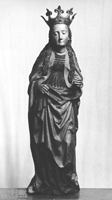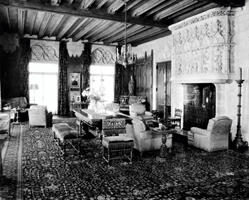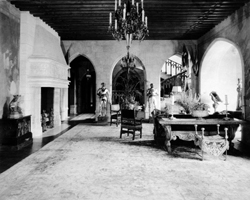Joan's Castle, Sands Point, New York
In 1927 William Randolph Hearst purchased "the grandest estate on Long Island,"which consisted of a mansion, an adjacent lighthouse and keeper's house. The estate served as the inspiration for Jay Gatsby's mansion in F. Scott Fitzgerald's classic novella, The Great Gatsby. Alva Vanderbilt Belmont, former wife of William K. Vanderbilt, Sr., and widow of O.H. Perry Belmont, constructed the house in 1915. Alva was a leader of the suffragette movement and Beacon Towers, as she called the estate, would stand as a testament to her strength. Alva aptly chose to dedicate it to Joan of Arc, a figurehead of women's rights, and included the image of the patron saint throughout the home in the form of statues, murals and frescoes.
When Hearst purchased the estate for his wife Millicent, the residence underwent a transformation. Although the St. Joan murals were removed during renovations, Hearst referred to the house as Joan's Castle. He introduced collections of armor, medieval frescoes, American furniture and French paintings. The archive contains many images and sales records for items transferred to the residence, as well as photographs of these items in situ.
Images from the Archive Album 110 contains an image of the Living Room at Sands Point with oak paneling from Hamilton Palace, Scotland. The 15th century carved oak figure of a saint was purchased by Hearst from French & Company Inc. and was transferred to Sands Point in 1931. It also contains an image of the Great Hall adorned with suits of armor and a female reliquary bust.



